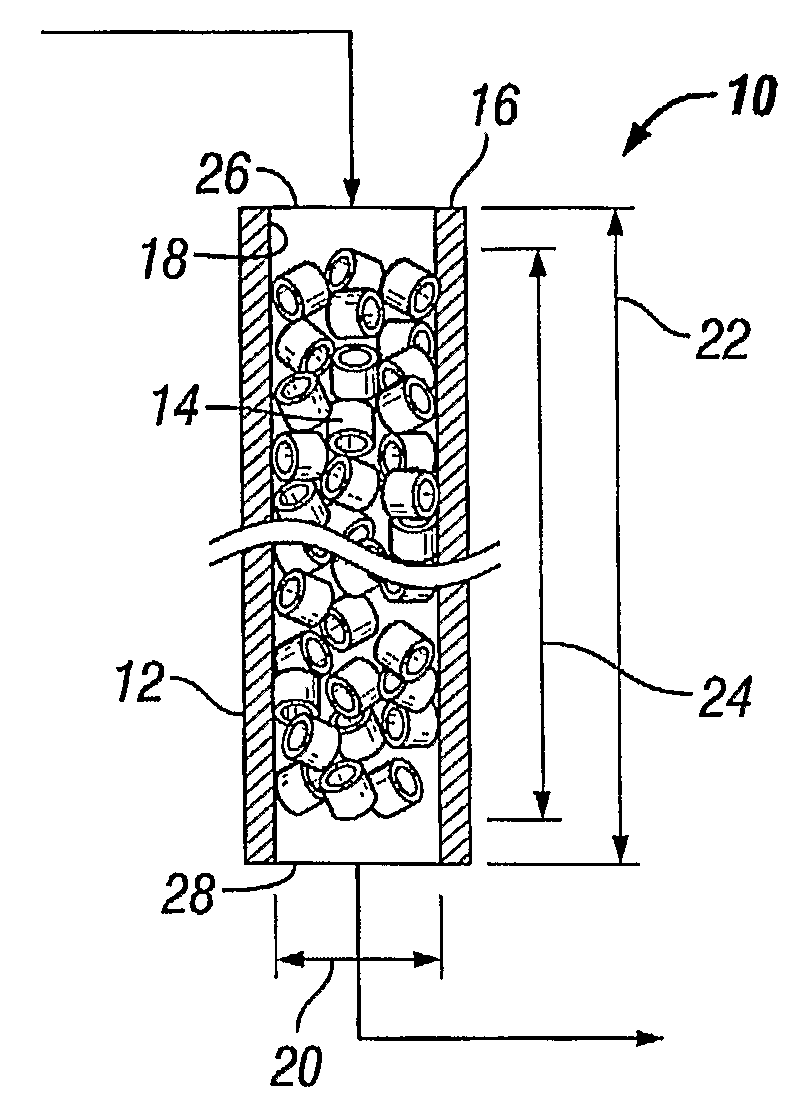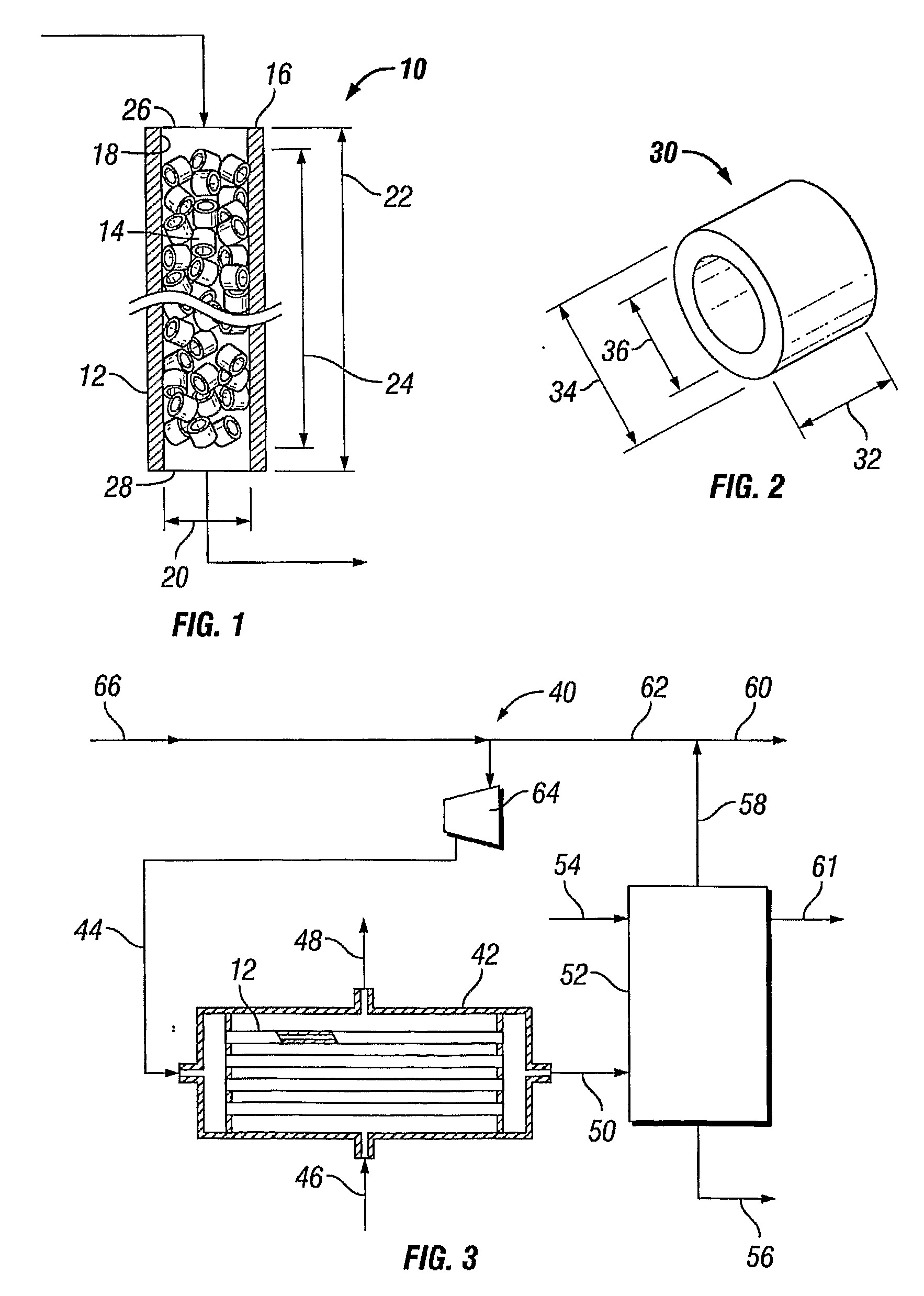Reactor System and Process for the Manufacture of Ethylene Oxide
a technology of ethylene oxide and reactor system, which is applied in the direction of physical/chemical process catalysts, bulk chemical production, lighting and heating apparatus, etc., can solve the problems of runaway reaction, large number of tubes, and inability to achieve adiabatic operation at reasonable operation rate,
- Summary
- Abstract
- Description
- Claims
- Application Information
AI Technical Summary
Benefits of technology
Problems solved by technology
Method used
Image
Examples
example i
Comparative, Not According to the Invention
[0059]Reactor models were developed which include appropriate kinetic models for the use of silver containing catalysts in a process for manufacturing ethylene oxide from ethylene and oxygen. An appropriate reactor model was developed for silver catalysts comprising rhenium and tungsten and another appropriate reactor model was developed for silver catalysts containing no rhenium and no rhenium copromoter.
[0060]The models are based on the correlation of actual catalyst performance data gathered from numerous sources such as micro-reactor activity data, pilot plant data and other sources of catalyst performance data.
[0061]Using the appropriate reactor model a process was modeled, as performed in a reactor tube of 11.8 m length and 38.9 mm internal diameter containing a packed bed of standard cylindrical catalyst particles having about 8 mm outside diameter 34, about 8 mm length 32 and about 3.2 mm inside diameter 36, the catalyst comprising ...
example ii
[0063]Example I was repeated, with the difference that the internal diameter was 54.4 mm, instead of 38.9 mm.
The shell-side coolant temperature was calculated to be 228° C. The model predicted that in a tube of this internal diameter (54.4 mm) the coolant temperature can be increased to 240° C. before the rate of production of reaction heat exceeds the rate of heat removal through the wall of the tube. Thus, according to the model prediction, under these conditions the margin to run-away is 12° C.
example iii
Comparative, Not According to the Invention
[0064]Example I was repeated, with the difference that the catalyst comprised silver in a quantity of 132 g / kg, relative to the weight of the catalyst. The selectivity of the catalyst is estimated to be 89.1 mole-%.
[0065]The shell-side coolant temperature was calculated to be 234° C. The model predicted that in a tube of this internal diameter (38.9 mm) the coolant temperature can be increased to 247° C. before the rate of production of reaction heat exceeds the rate of heat removal through the wall of the tube. Thus, according to the model prediction, under these conditions the margin to run-away is 13° C.
PUM
| Property | Measurement | Unit |
|---|---|---|
| diameter | aaaaa | aaaaa |
| diameter | aaaaa | aaaaa |
| diameter | aaaaa | aaaaa |
Abstract
Description
Claims
Application Information
 Login to View More
Login to View More - R&D
- Intellectual Property
- Life Sciences
- Materials
- Tech Scout
- Unparalleled Data Quality
- Higher Quality Content
- 60% Fewer Hallucinations
Browse by: Latest US Patents, China's latest patents, Technical Efficacy Thesaurus, Application Domain, Technology Topic, Popular Technical Reports.
© 2025 PatSnap. All rights reserved.Legal|Privacy policy|Modern Slavery Act Transparency Statement|Sitemap|About US| Contact US: help@patsnap.com


